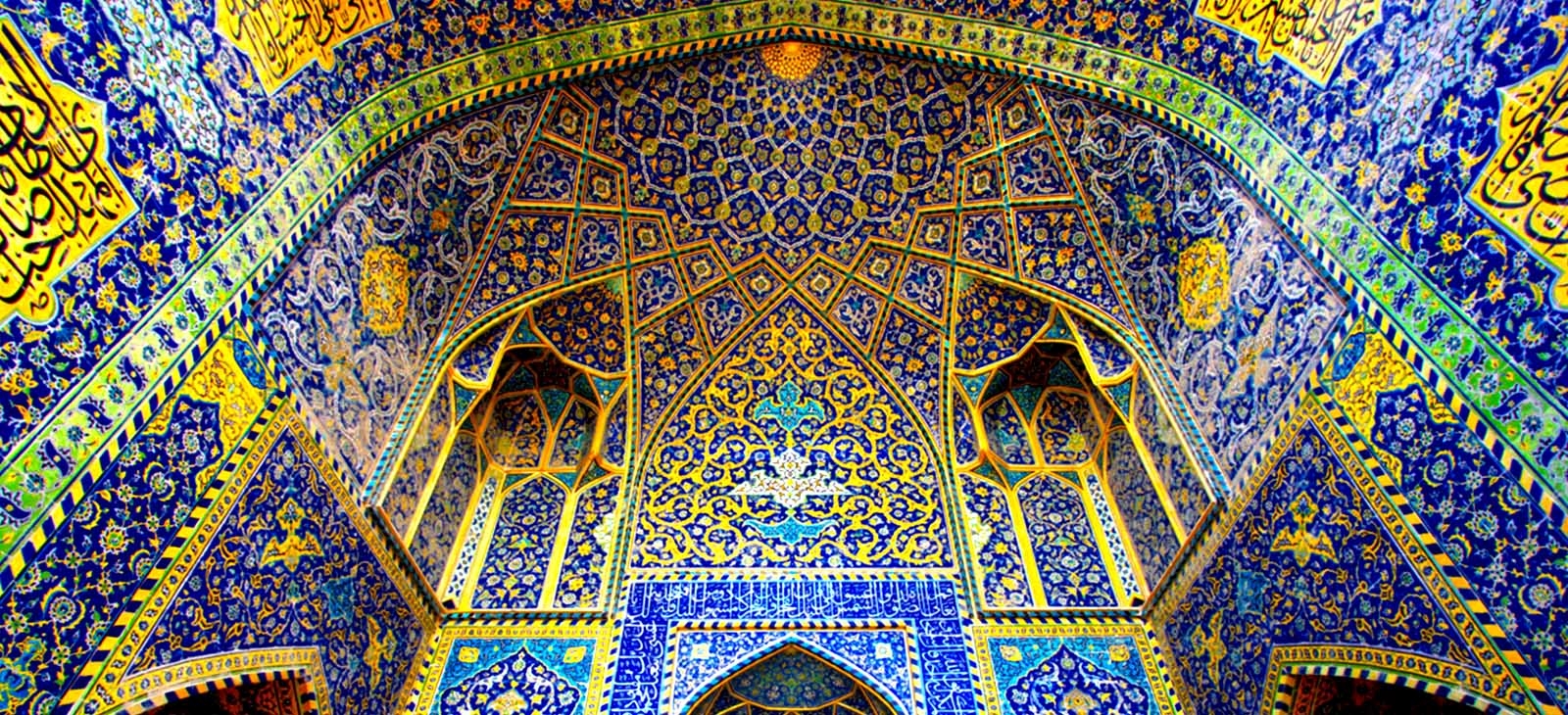Islamic architecture of Persia
The fall of the Sassanian dynasty by the invading Muslim Arabs led to the adaptation of the Persian architectures for Islamic religious buildings in Iran. Arts such as calligraphy, stucco work, mirror work and mosaics became closely tied with the architecture of Mosques in Persia (Iran) specially with the round domed rooftops which roots its origin back to the Parthian (Ashkanid) dynasty of Iran.
Archaeological excavations have provided much evidence supporting the impact of Sassanid architecture on the architecture of the Islamic world.
Many experts believe the period of Persian architecture from the 15th through 17th centuries CE to be the pinnacle of the post-Islamic era. Various structures such as mosques, mausoleums, bazaars, bridges and palaces have survived from this period.
Safavid Isfahan tried to achieve grandeur in scale (Isfahan'sNaghsh-i Jahan Square is the sixth largest square worldwide), knowing how to build tall buildings with vast inner spaces. However, the quality of ornaments was less compared to those of the 14th and 15th centuries.
Another aspect of this architecture was the harmony with the people, their environment and their beliefs it presented and manifested. At the same time no strict rules were applied to govern this form of Islamic architecture.
The great mosques of Khorasan, Isfahan and Tabriz each used local geometry, local materials and local building methods to express, each in their own way, the order, harmony and unity of Islamic architecture. When the major monuments of Islamic Persian architecture are examined, they reveal complex geometrical relationships, a studied hierarchy of form and ornament and great depths of symbolic meaning.
In the words of Arthur U. Pope, who carried out extensive studies in ancient Persian and Islamic buildings:
- "The meaningful Impact of Persian architecture is versatile. Not overwhelming but dignified, magnificent and impressive."
However, Pope's approach toward Qajar art and architecture is quite negative.

